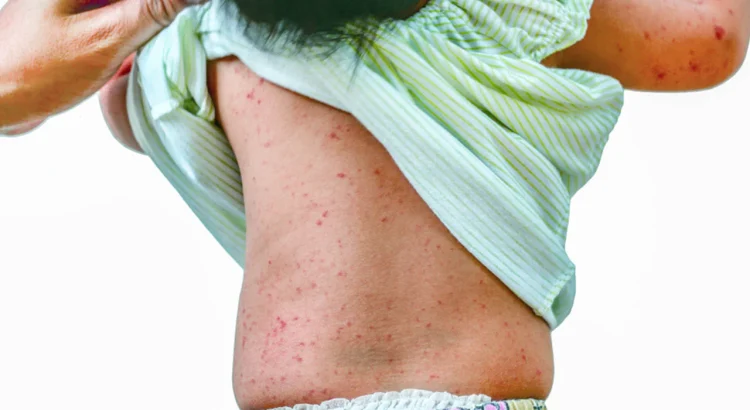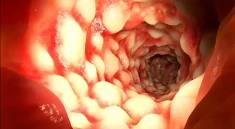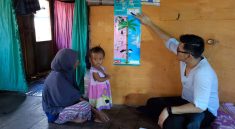DiYES International School – Roseola often catches parents completely off guard. One moment a child seems fine, the next they are burning with a high fever that seems to come out of nowhere. This common childhood illness typically affects children between 6 months and 2 years old. While it is usually mild and self-limiting, the way it appears can cause panic. The fever may last for three days without any other symptoms. Just when the fever subsides, a light pink rash begins to spread across the body. Many parents mistakenly believe the worst is over when the rash appears, but this is actually a sign of recovery. Understanding the typical stages of Roseola can prevent unnecessary stress and confusion. Knowledge about its symptoms, transmission, and treatment is key to managing this illness calmly and effectively.
Recognizing the Signs and Symptoms of Roseola
One of the most confusing aspects of Roseola is its unpredictable presentation. A child with Roseola usually starts with a sudden, high fever that can reach up to 40 degrees Celsius. This fever may last for three to five days without other obvious symptoms. Roseola may not cause a sore throat or coughing at first, which can make it difficult to diagnose early.
Some children experience irritability, mild diarrhea, or swollen eyelids. After the fever breaks, a rash emerges starting from the chest and abdomen, then spreading to the arms and neck. The rash is not itchy or painful and usually fades within two days. Roseola is often misdiagnosed as other viral infections because the fever appears before the rash. Parents must pay attention to the fever pattern and the timing of the rash to distinguish it from other conditions. Roseola should always be confirmed by a pediatrician when symptoms are unclear.
“Read about: Is Your Child’s Skin Infection Actually Impetigo? The Shocking Signs Parents Miss”
How Roseola Spreads and Who Is at Risk
Roseola spreads mainly through respiratory droplets when an infected person coughs or sneezes. It can also pass through contact with saliva, toys, or utensils. The virus that causes Roseola is usually human herpesvirus 6 and sometimes human herpesvirus 7. While most cases occur in babies and toddlers, older children and adults can occasionally contract the virus. However, once someone has had Roseola, they generally develop immunity. Children who attend daycare or have siblings are more likely to be exposed. Roseola is most contagious during the fever phase before the rash appears. That makes prevention difficult because it spreads before the illness becomes visible. Parents should be cautious about sharing drinking cups or pacifiers among children. Proper hygiene practices like regular handwashing and disinfecting shared surfaces help reduce the risk of transmission within households and schools.
Treatment and Home Care for Roseola-Infected Children
Roseola usually resolves on its own without the need for specific antiviral medication. Treatment focuses on managing the fever and keeping the child comfortable. Parents often use fever-reducing medications like acetaminophen or ibuprofen under a doctor’s guidance. Children should stay hydrated and well-rested. Lukewarm sponge baths and light clothing help control body temperature. Antibiotics are not effective because Roseola is caused by a virus. Hospital visits are rarely needed unless complications such as febrile seizures occur. These seizures are brief and do not cause long-term harm in most cases. Roseola-related fever spikes can be alarming but are manageable at home with proper monitoring. The rash phase does not need medical creams or lotions. As soon as the fever breaks and the rash appears, the child typically starts to feel better. Comfort and reassurance play a big role in helping both children and parents cope with the illness.
“Read more: Exposed: The PEARR Method That’s Transforming How Victims of Trafficking Are Treated”
When to Seek Medical Attention for Roseola
Although Roseola is usually mild, certain symptoms may require immediate medical care. Parents should consult a doctor if a child experiences a seizure, has difficulty breathing, or remains lethargic for long periods. A persistent high fever that lasts more than five days should also be evaluated. If the rash does not fade within a few days or worsens, another illness may be present. Infants younger than 6 months should be checked by a healthcare provider even with mild symptoms. Some children may become dehydrated during the fever phase if they refuse to drink fluids. Medical professionals can provide guidance on whether hospitalization is necessary in more severe cases. While most children recover fully from Roseola without complications, staying informed and observant is vital. The earlier symptoms are recognized and managed, the smoother the recovery process will be for everyone involved.



